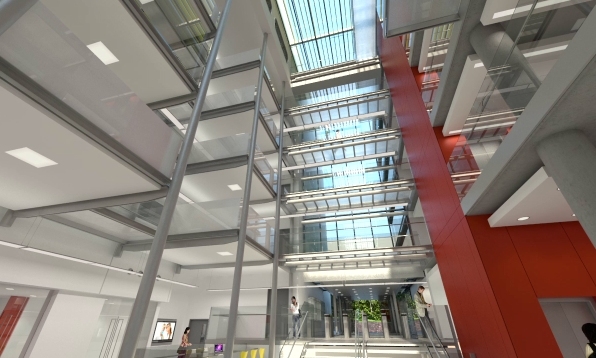University estates across the UK are continuing to grow with a total income figure in excess of £26 billion
AUDE (Association of University Directors of Estate) releases its comprehensive report showcasing key Estate statistics across the sector.
Released today, ‘Estates: The Foundations of Higher Education’ report, is a challenging and interesting analysis of the estates of the higher education sector. The data provided is for 2011-2012 and is contextualised with comparable figures from the last ten years.
The report released today by AUDE, highlights that the size of the University sector is anticipated to remain constant in the short to medium term with increases in income of 1% in 2010-11 and 2011-12.
The statistics also show that whilst property costs rose substantially up to 2008-9, costs are now remaining relatively stable year on year and there is little change in 2011-12. Whilst there are a number of factors influencing this, with rising energy prices and demand for access to facilities increasing, it is clear that there continues to be good cost management from Estate managers to ensure costs remained level.
Capital spend has dipped slightly since its peak in 2010/11 but is still at a healthy level, (£1,840m in 2011/12) despite reduced funding from Government. The report suggests that institutions have been recognising the need to continue to invest in providing an excellent environment for staff and students. With the number of home students remaining fixed, there’s increasing competition amongst Universities to attract them, and one key aspect that can influence choice is the provision of the good quality learning environment.
Whilst evidence suggests that some Universities are reducing their capital spend, others are taking the view that this is a good time to invest. Also, some institutions are undertaking complex programmes, which take a number of years to deliver, by seeking other sources of funding.
Additionally the income generated per m² within the sector has continued to grow. This is a good measure of how efficiently estates are being used. Across the whole estate it has reached £1,600 per m² and teaching income generated by teaching space has increased faster than research income generated by research space.
Other key statistics include:
• The University sector in the UK now has a population of 2, 336,000 people (predominantly made of 1,941,000 taught students).
• The University’s total estate (both academic and residential) is 26.7 million m² (gross internal area)
• The estate costs £1,975 million per annum to run, this includes maintenance, utilities, rates paid, cleaning, management and other running costs.
The report, for the first time this year, has been written by CBRE, the world experts in commercial real estate services. George Griffith, from CBRE who was involved in authoring the report said: “It has been a pleasure working with AUDE to analyse the statistics and write the report. What it shows is the huge size of the University sector and the enormous contribution it makes to the economy in general and to the property market in particular. Our work has shown the level of professionalism within the sector, and their clear understanding of what is needed and how to deliver it.”
AUDE Chairman Mark Swindlehurst, said: “What these statistics prove is that across the sector, even with the changes in the Higher Education environment, there is good-quality estate management which translates into a better staff and student experience. The University estate is core to enabling the delivery of the academic mission and we know there is a clear link between the buildings and accommodation on offer at a University and the desirability of that establishment to potential students. A thriving, professional University estates sector is a key enabler of ensuring a high quality student experience. It is vital to the success of the UK higher education system, and of real benefit to both the local and UK economy.
As a sector we face many challenges including budget cuts, higher energy rates and carbon reduction targets, but this report helps identify areas of good practice which can be shared.”
The full report can be found at www.aude.ac.uk/info-centre/EMS


